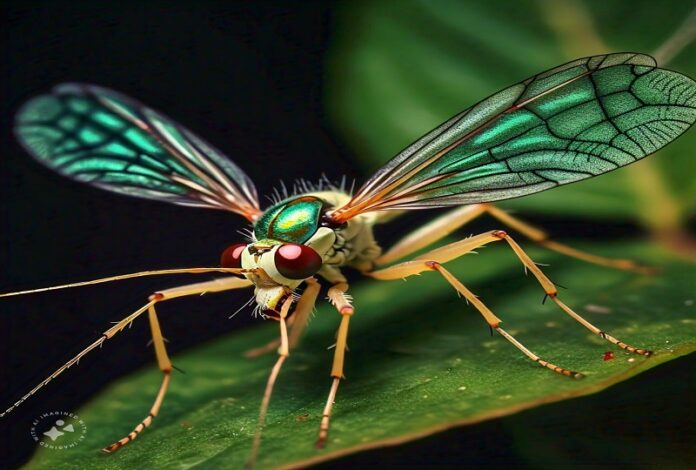Laceflies, frequently called lacewings, are fragile insects from the family Chrysopidae. They are known for their many-sided, ribbon like wings and delicate bodies, which make them unmistakable among different insects. They assume a critical part in normal irritation control, particularly in gardens and agricultural settings. The two grown-ups and hatchlings of laceflies are predatory, principally devouring nuisances like aphids, vermin, and other delicate bodied insects.
Laceflies have translucent wings embellished with a fine organization of veins, making the ribbon like appearance from which they infer their name. Their bodies are slender, and their wings rest tent-like over the body when not in flight.
Normally, laceflies are green or brown, with metallic or brilliant shaded eyes. The typical grown-up is around 1 to 1.5 cm long, with the wingspan frequently extending past their body size .
Laceflies go through complete metamorphosis, beginning with eggs laid on leaves, frequently suspended on flimsy stalks. The hatchlings lid and start their ravenous taking care of stage, frequently called “aphid lions” because of their hunger for bother insects. After a time of pupation in silk cocoons, the grown-up lacefly emerges
The hatchlings, furnished with strong mandibles, chase after delicate bodied prey, including aphids, caterpillars, and other little irritations. Following half a month, the hatchlings pupate and transform into grown-up laceflies, prepared to reproduce and proceed with the cycle.
Laceflies are commonly tracked down in gardens, fields, and backwoods. They are particularly dynamic in environments where bother populations flourish, helping control destructive bug outbreaks.
These insects favor habitats wealthy in foliage where they can track down more than adequate prey. Gardeners and ranchers frequently find laceflies beneficial because of their bug controlling propensities .
The hatchlings are proficient hunters of aphids, bugs, and different nuisances, making them priceless for normal irritation control in agricultural settings. Lacefly hatchlings can gobble up enormous quantities of aphids day to day, keeping up with crop health.
Laceflies are a crucial part of integrated bug the executives (IPM) methodologies. Their predatory nature lessens the requirement for substance pesticides, advancing eco-accommodating cultivating
Rationing laceflies includes restricting pesticide use and keeping up with habitats that help their life cycle. Since they are regular nuisance regulators, their presence supports biodiversity.
Gardeners can draw in laceflies by establishing blossoms that produce nectar and dust, which grown-ups feed on. Staying away from unsafe pesticides is fundamental to protecting lacefly populations
Laceflies act as unrecognized yet truly great individuals in agriculture and cultivating, normally controlling nuisance populations and keeping up with ecosystem balance.
RELATED ARTICLES




